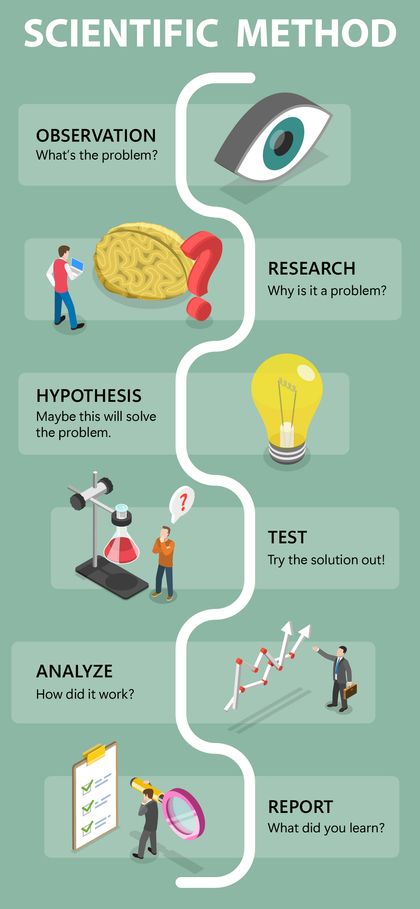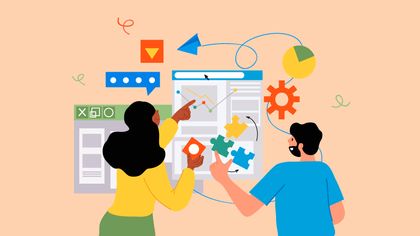The Power of Solution-Based Learning: A Path to Real-World Mastery
EdgePoint Learning
🍿 6 min. read
In today's rapidly evolving world, the ability to adapt, innovate, and solve complex problems has become more crucial than ever before. The traditional more passive education system, with its emphasis on rote memorization and testing, often falls short in equipping learners with the practical skills they need to thrive in the real world. Solution-Based Learning (SBL) emerges as an educational approach that bridges the gap between theory and practice. In this post, we will explore the concept of Solution-Based Learning, its principles, benefits, and practical applications.
🔍 What you’ll find in this post
Understanding Solution-Based Learning
Solution-Based Learning is an educational methodology that centers around solving real-world problems to foster critical thinking, creativity, and problem-solving skills. Unlike traditional methods, which rely on theoretical knowledge, SBL places learners in scenarios where they must devise, analyze, and implement solutions.
👉Discover More: Explore the benefits of experiential learning in the workplace.
SBL is rooted in several essential principles that guide its implementation, all working together to enforce the power of solving problems and a growth mindset.
Active Learning
Learning by doing, rather than by lecture, is not a new concept. Aristotle theorized, “For the things we have to learn before we can do them, we learn by doing them.” In SBL, learners are actively engaged in problem-solving, experimentation, and decision-making, which enhances their understanding and retention of concepts.
Problem-Centric Approach
SBL revolves around real-world problems and issues, which adds relevancy to the learning experience and cultivates a deeper understanding of the subject matter. Problem-centric learning is often used in sales education; enabling sales agents with the skills to diagnose a customer problem and offer creative solutions, or identifying the gaps between what’s working for a customer and what would be even better.
Collaborative Learning
Collaboration is encouraged in SBL, as learners work together to tackle complex issues. This promotes teamwork, communication, and collective problem-solving skills. Collaboration also has some unexpected benefits to learners, like increased self-esteem and responsibility.
Reflection and Feedback
SBL emphasizes reflection on the learning process, as well as feedback from teachers, peers, and self-assessment. This feedback loop fosters continuous improvement.
The Benefits of Solution-Based Learning
So Solution-Based Learning sounds great, but what’s it actually going to do for your learners? Why invest the time and effort into developing training that utilizes this approach?
Foster Critical Thinking
SBL compels learners to think critically, as they analyze problems, evaluate solutions, and adapt their strategies. This skill is invaluable in today's knowledge-based economy. Employees who can think critically are vital.
Encourage Creativity
Through SBL, learners are given the freedom to explore unconventional solutions, nurturing their creativity and innovation. According to one IBM study, 60 percent of CEOs identify creativity as the most important leadership skill for business success.
Offer Real-World Relevance
SBL bridges the gap between the classroom and real life, ensuring that learners can apply what they learn to practical situations.
Cultivate Problem-Solving Skills
One of the primary objectives of SBL is to develop learners’ problem-solving abilities, which are essential in any professional field. You want employees who can solve problems, not create them!
Prepare for Future Careers
SBL equips learners with the skills and mindset necessary to succeed in an ever-changing job market, where adaptability and continuous learning are key. Keep in mind that your employees want to keep growing their careers. Help them do that within your organization for a win-win!
👉Learn More: Upskilling is a great way to reduce the digital skills gap and retain employees.
Implementing Solution-Based Learning
How do you go about implementing Solution-Based Learning within your organization?
Incorporate Real-World Problems
To implement SBL effectively, educators must craft authentic problems and scenarios that reflect real-world challenges. This process involves identifying learning objectives and aligning them with practical issues.
Assign Collaborative Group Work
Collaboration is a cornerstone of SBL. Learners are often divided into groups, where they work together to brainstorm solutions, debate ideas, and learn from one another. Thankfully, many existing eLearning solutions allow employees worldwide to contribute to larger company discussions.
Transition Teachers to Facilitators
In the SBL approach, teachers transition from being the primary source of knowledge to facilitators. They guide learners, offer support, and provide feedback rather than delivering lectures. Removing the lecture position opens up opportunities for adaptive learning and content curation instead.
Assessing Learning
Assessing SBL can be different from traditional methods. It often involves evaluating problem-solving processes, the quality of proposed solutions, and learners' ability to reflect on their learning journey. You’re not going to do this with a standard set of True or False questions. It will require more thought and planning, but will be worth it in the long run.
Real-World Examples of Solution-Based Learning
In theory this all sounds great! But let’s look at some actual examples.
Project-Based Learning
Project-based learning (PBL) is a common application of SBL. Learners work on extended projects that require research, problem-solving, and the creation of a tangible product. Going back to the example of a sales team, you could task them with polling existing customers for their biggest complaint. Collaborate with the team to find a solution, and help create a better product.
Case Studies and Simulations
In fields like business and law, case studies and simulations are powerful SBL tools that immerse learners in real-world scenarios, challenging them to develop solutions. But don’t limit yourself by thinking it wouldn’t apply to your business! Develop simulations around frequently used tools and software, or even around common customer interactions for sales and support positions.
Service Learning
Service learning combines community service with academic instruction, allowing learners to apply their classroom knowledge to solve community problems. Service learning isn’t just for students, it can be beneficial for employees as well. Many businesses already have community outreach and volunteer opportunities. Expand on these by incorporating service learning opportunities.
Science and Engineering Challenges
In science and engineering education, SBL is employed through challenges and experiments that require learners to design and test solutions. You don’t have to be a scientist or engineer to incorporate these ideas though. Remember those customer complaints? Challenge your team to come up with ideas, test them out, review the results, and report back. Follow that scientific method!

Challenges and Considerations
Obviously, implementing Solution-Based Learning isn’t going to be as simple as flipping a switch. There will be various challenges and considerations to take into account as you move forward.
Resistance to Change
Implementing SBL can face resistance from traditional trainers and learners, as it disrupts established teaching methods. Change can be scary sometimes. But gradual implementation and good communication can both go a long way towards alleviating those fears.
Resource Allocation
SBL may require more resources, such as technology, time, and materials, which can be a challenge. Start small, prove it works, and gradually build your case for a bigger budget.
Assessment Challenges
Evaluating SBL can be more complex than traditional grading. Trainers must develop new assessment methods that measure learners' problem-solving abilities. As we mentioned earlier, a barrage of True or False questions isn’t going to cut it. Get creative with your questions.
👉Learn more: Find out how scenarios can help create better training.
Learner Readiness
Not all learners may be ready for SBL, and some may require additional support and guidance to adapt to this new learning approach. Again, slow roll-outs and communication can help get your learners ready for this change in style.
The Future of Solution-Based Learning
Solution-Based Learning is here. Implementation into corporate training initiatives can be tricky, but it’s worth the effort. How do we see it growing and evolving?
Digital Learning and SBL
The rise of technology has created new opportunities for SBL, with online platforms, simulations, and virtual reality offering immersive learning experiences. These opportunities will only continue to grow and expand in the future.
Global Perspective
The world continues to grow more interconnected, and business span the globe. SBL encourages learners to address global challenges, fostering a sense of responsibility and interconnectedness.
Beyond Academia
Remember that while SBL did start in academia, it is not limited to educational institutions. There are many opportunities for business use, with applications in corporate training, government, and various other sectors.
Lifelong Learning
In a rapidly changing world, SBL promotes the idea of continuous learning throughout one's life, helping individuals stay adaptable and competitive. As Albert Einstein once said, “Intellectual growth should commence at birth and cease only at death.”
👉Learn more: Discover how to build a culture of continuous learning at work.
Let’s go!
Solution-Based Learning is a transformative educational approach that empowers learners to develop the skills they need to thrive in the real world. By focusing on critical thinking, creativity, and problem-solving, SBL equips learners with the tools necessary to adapt to an ever-changing landscape. As we look to the future, SBL offers a promising path for the development of the next generation of problem solvers and innovators, prepared to tackle the complex challenges of the 21st century. Are you ready? We are! Contact EdgePoint Learning today to learn more!

